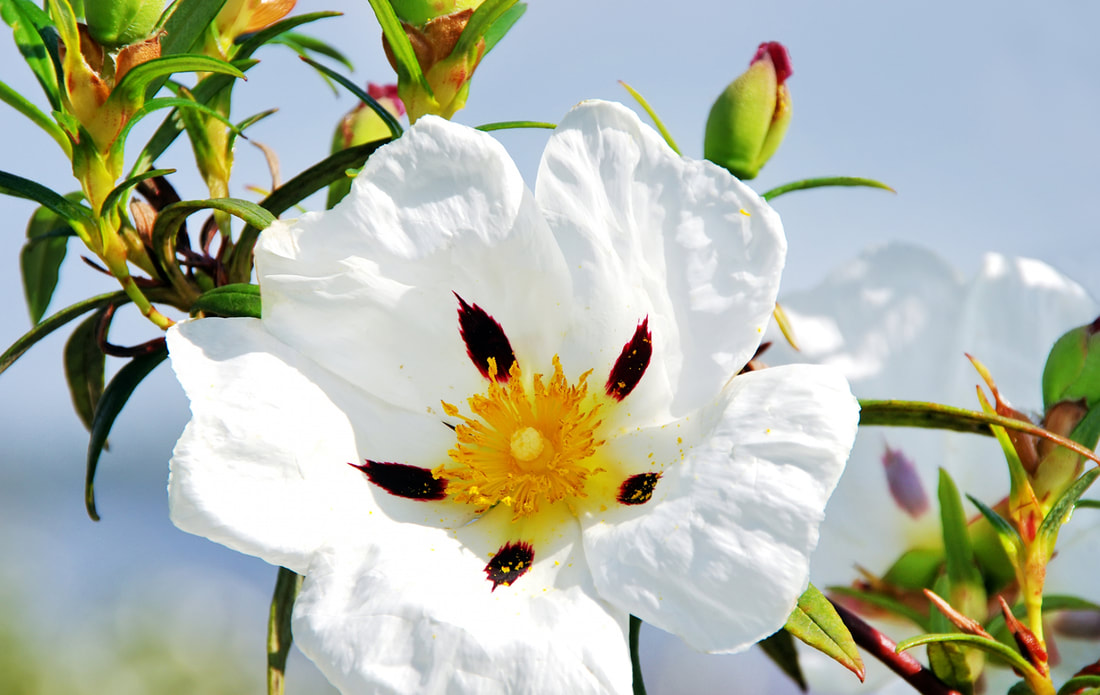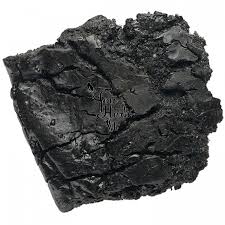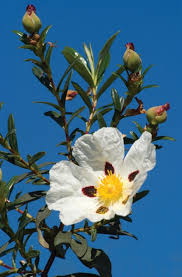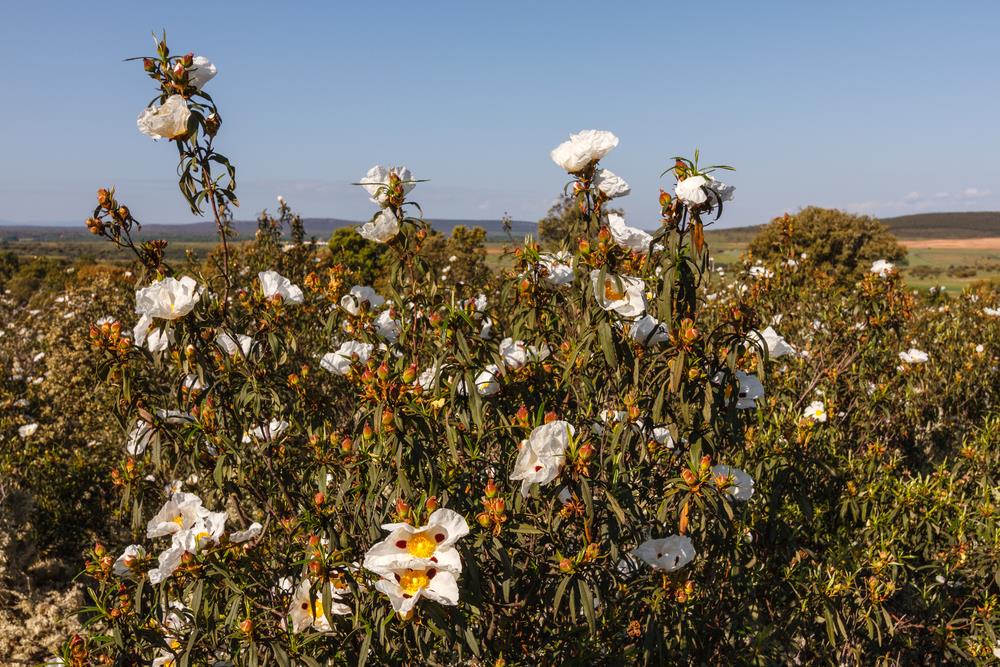Elevate Your Fragrances with Labdanum Woody Resin
Labdanum: A Versatile Resin with Enchanting Aromas and Remarkable Properties
Labdanum, also known as "rockrose," is an aromatic resin derived from certain species of rockrose plants (Cistus spp.). It has been utilized for various purposes throughout history, including perfumes, therapeutic oils, medicinal applications, and even in food. Its captivating fragrance, unique characteristics, and intriguing history have made it a significant player in different industries. In this essay, we will explore the diverse applications and fascinating facts surrounding labdanum.
Historical Background: Labdanum's use dates back to ancient times. It was highly prized by ancient civilizations, including the Egyptians, Greeks, and Romans. The resin was an essential ingredient in perfumes, incense, and medicinal preparations. It was also used as an offering to the gods during religious ceremonies and rituals. Labdanum's historical significance is deeply intertwined with its delightful fragrance and therapeutic properties.
Perfumes and Fragrance: Labdanum is renowned for its rich, warm, and resinous scent. It possesses an amber-like aroma with hints of sweetness and earthiness. Perfumers consider it a valuable base note that adds depth and complexity to fragrances. It is often used in oriental, amber, and chypre perfume compositions, where it acts as a fixative, prolonging the scent's longevity. Labdanum's unique olfactory profile makes it a cherished component in the world of perfumery, where it complements various other essential oils and aromatics.
Therapeutic Oils: In aromatherapy, labdanum essential oil is cherished for its calming and grounding effects. It is believed to have properties that promote relaxation, reduce stress, and alleviate anxiety. The aromatic molecules in the oil can positively influence the limbic system, which plays a vital role in emotions and memory. Additionally, labdanum oil is said to have skin-soothing properties, making it an occasional ingredient in skincare formulations.
Medicinal Applications: Traditional medicine has harnessed the healing potential of labdanum for centuries. Its medicinal applications have been diverse and varied across cultures. For instance, ancient Greek physicians utilized labdanum as an expectorant to ease respiratory conditions. It was also employed topically for wound healing and as an anti-inflammatory agent. While modern medicine has progressed significantly, labdanum's historical use in traditional remedies highlights its potential therapeutic properties.
Food and Culinary Uses: In the culinary world, labdanum's applications are relatively obscure but intriguing. In some regions, the resin was historically used as a natural sweetener, adding flavor and depth to dishes. It was also employed as a thickening agent and a component in certain alcoholic beverages. While its culinary usage has waned over time, labdanum remains an interesting aspect of gastronomic history.
Fun and Crazy Facts:
Labdanum, the aromatic resin derived from rockrose plants, has a rich history filled with diverse applications and enchanting qualities. From its role in perfumes, aromatherapy, and traditional medicine to its occasional use in culinary endeavors, labdanum has left an indelible mark on human civilization. Its allure lies not only in its captivating fragrance but also in its historical significance and fascinating properties. As we continue to explore the wonders of natural resources, labdanum stands as a testament to the intriguing world of aromatic treasures that have enriched human experiences for millennia.
Labdanum, also known as "rockrose," is an aromatic resin derived from certain species of rockrose plants (Cistus spp.). It has been utilized for various purposes throughout history, including perfumes, therapeutic oils, medicinal applications, and even in food. Its captivating fragrance, unique characteristics, and intriguing history have made it a significant player in different industries. In this essay, we will explore the diverse applications and fascinating facts surrounding labdanum.
Historical Background: Labdanum's use dates back to ancient times. It was highly prized by ancient civilizations, including the Egyptians, Greeks, and Romans. The resin was an essential ingredient in perfumes, incense, and medicinal preparations. It was also used as an offering to the gods during religious ceremonies and rituals. Labdanum's historical significance is deeply intertwined with its delightful fragrance and therapeutic properties.
Perfumes and Fragrance: Labdanum is renowned for its rich, warm, and resinous scent. It possesses an amber-like aroma with hints of sweetness and earthiness. Perfumers consider it a valuable base note that adds depth and complexity to fragrances. It is often used in oriental, amber, and chypre perfume compositions, where it acts as a fixative, prolonging the scent's longevity. Labdanum's unique olfactory profile makes it a cherished component in the world of perfumery, where it complements various other essential oils and aromatics.
Therapeutic Oils: In aromatherapy, labdanum essential oil is cherished for its calming and grounding effects. It is believed to have properties that promote relaxation, reduce stress, and alleviate anxiety. The aromatic molecules in the oil can positively influence the limbic system, which plays a vital role in emotions and memory. Additionally, labdanum oil is said to have skin-soothing properties, making it an occasional ingredient in skincare formulations.
Medicinal Applications: Traditional medicine has harnessed the healing potential of labdanum for centuries. Its medicinal applications have been diverse and varied across cultures. For instance, ancient Greek physicians utilized labdanum as an expectorant to ease respiratory conditions. It was also employed topically for wound healing and as an anti-inflammatory agent. While modern medicine has progressed significantly, labdanum's historical use in traditional remedies highlights its potential therapeutic properties.
Food and Culinary Uses: In the culinary world, labdanum's applications are relatively obscure but intriguing. In some regions, the resin was historically used as a natural sweetener, adding flavor and depth to dishes. It was also employed as a thickening agent and a component in certain alcoholic beverages. While its culinary usage has waned over time, labdanum remains an interesting aspect of gastronomic history.
Fun and Crazy Facts:
- Historical Resin for Trade: In ancient times, labdanum was a valuable commodity for trade. It was particularly sought after in the Mediterranean region and the Middle East.
- Harvesting the Resin: Harvesting labdanum is a labor-intensive process. The resin is collected from the shrubs by "combing" the sticky resinous substance off the plants' leaves and twigs. The collected resin is then carefully processed to create the final product.
- Spiritual and Religious Significance: Labdanum has a spiritual dimension and has been used in sacred rituals, meditation, and prayer. Its alluring fragrance was associated with purification and connection to the divine.
- A Fixative in Ancient Perfumery: In ancient Egypt, labdanum was utilized as a fixative for mummies' wrappings, helping preserve bodies during the embalming process.
- Alternative Names: Labdanum is known by various names, such as ladanum, ladanon, and jund al-jady, reflecting its importance in different cultures.
Labdanum, the aromatic resin derived from rockrose plants, has a rich history filled with diverse applications and enchanting qualities. From its role in perfumes, aromatherapy, and traditional medicine to its occasional use in culinary endeavors, labdanum has left an indelible mark on human civilization. Its allure lies not only in its captivating fragrance but also in its historical significance and fascinating properties. As we continue to explore the wonders of natural resources, labdanum stands as a testament to the intriguing world of aromatic treasures that have enriched human experiences for millennia.
To experience augmented reality, please open the Facebook-app using QR code and point to the image below
Discover the Aromatic Essence of Labdanum
Labdanum is a resin obtained from the shrub Cistus ladanifer, which is native to the Mediterranean region. It has a long history of use in perfumery, dating back to ancient times. The resin is collected by making small incisions in the bark of the shrub and allowing the resin to seep out and harden.
Labdanum has a warm, musky, and slightly sweet scent that is often described as being similar to amber or animalic scents. It is used as a base note in many perfumes and colognes, providing a rich, long-lasting foundation for the other scents in the fragrance.
Labdanum is also used in traditional medicine and in perfumery for its healing properties. Due to its anti-inflammatory properties, it is used to soothe the skin and alleviate pain and discomfort.
In perfumery, labdanum is one of the most important and widely used ingredients, it can be found in many classic and modern perfumes, it's considered a versatile ingredient that is able to enhance and support other scents. Some famous perfumes and colognes that feature labdanum as a prominent note include:
It's worth noting that, the prominence of labdanum may vary depending on the perfume, it can be a prominent note in one fragrance and a subtle note in another.
Labdanum has a warm, musky, and slightly sweet scent that is often described as being similar to amber or animalic scents. It is used as a base note in many perfumes and colognes, providing a rich, long-lasting foundation for the other scents in the fragrance.
Labdanum is also used in traditional medicine and in perfumery for its healing properties. Due to its anti-inflammatory properties, it is used to soothe the skin and alleviate pain and discomfort.
In perfumery, labdanum is one of the most important and widely used ingredients, it can be found in many classic and modern perfumes, it's considered a versatile ingredient that is able to enhance and support other scents. Some famous perfumes and colognes that feature labdanum as a prominent note include:
- Chanel No. 19
- Guerlain Vetiver
- Tom Ford Amber Absolute
- Yves Saint Laurent La Nuit de l'Homme
- Dior Homme Intense
It's worth noting that, the prominence of labdanum may vary depending on the perfume, it can be a prominent note in one fragrance and a subtle note in another.
Crafting Perfumes with Natural Labdanum Resin
Labdanum is believed to have therapeutic properties due to its anti-inflammatory and soothing effects on the skin. It is used in traditional medicine and perfumery for its healing properties.
Some of the therapeutic benefits of labdanum include:
Some of the therapeutic benefits of labdanum include:
- Skin healing: Labdanum is known to have anti-inflammatory properties that can soothe irritated skin and help to heal wounds and other skin conditions.
- Stress relief: The warm and musky scent of labdanum is believed to have a calming and soothing effect on the mind and body, helping to reduce stress and promote relaxation.
- Pain relief: Labdanum is also believed to have pain-relieving properties, making it useful for treating conditions such as arthritis and sore muscles.
- Hormone balance: Some studies have suggested that labdanum may help to regulate hormones in the body, which can be beneficial for conditions such as PMS and menopause.
Labdanum: A Versatile Ingredient for Perfumers
Few fun facts about Labdanum:
- Ancient Egyptians used labdanum in perfumes, incense, and as a medicine.
- The ancient Greeks and Romans also used labdanum in perfumes and as a medicine.
- In ancient Greece, labdanum was associated with the god of wine and fertility, Dionysus.
- Labdanum was used in medieval times to treat a variety of ailments, including headaches, wounds, and skin conditions.
- In the Middle Ages, labdanum was also used as a natural remedy for digestive issues, including bloating and constipation.
- In perfumery, labdanum is considered a "fixative," which means it can help to make other scents last longer.
- Labdanum is used in perfumes and colognes to provide a warm, musky, and slightly sweet base note.
- In some cultures, labdanum is believed to have aphrodisiac properties and is used in love potions and perfumes to attract a romantic partner.
- Labdanum is a key ingredient in many traditional perfumes, such as the Middle Eastern attar and the North African kyphi.
- Labdanum resin is collected by making small incisions in the bark of the Cistus ladanifer shrub, then the resin is allowed to seep out and harden.
Explore Scentopia Singapore's Perfume Ingredients
The scent of labdanum is described as warm, musky, and slightly sweet. It has a woody, amber-like aroma with a hint of resin. Some people also describe it as having a slightly animalic or leathery note, similar to that of civet or musk. The scent of labdanum can be quite strong and persistent, making it a popular fixative in perfumes and colognes. It's also used to enhance the longevity and complexity of other scents.
Unveiling the Captivating Aroma of Labdanum
Labdanum is used in many perfumes and colognes, but not many brands are based on labdanum as the main note. However, many perfumes use labdanum as a fixative, to enhance the longevity and complexity of other scents. Some famous perfume brands that use labdanum as a key ingredient in their fragrances include:
- Tom Ford: Tom Ford's perfumes are known for their warm, musky, and sensual scents, and many of them feature labdanum as a key ingredient.
- Le Labo: Le Labo is a niche perfumery brand that uses high-quality, natural ingredients in its fragrances, including labdanum.
- Byredo: Byredo is a luxury perfumery brand that creates unique, modern fragrances with high-quality ingredients, including labdanum.
- Diptyque: Diptyque is a French perfumery brand that creates high-quality, natural fragrances, many of which feature labdanum as a key ingredient.
- Guerlain: Guerlain is a French perfumery brand that has been in business for over 175 years, and it is still using labdanum in some of their perfumes
Join Scentopia, Sentosa's latest tourist attraction wonderful orchid scent crafting, fragrance tour, bridal shower or corporate team building which includes perfume making onsite and offsite, beach activities and more. We also serve primary school learning journey, secondary students and pupil on industrial excursions. Know more about our orchids perfume bar or therapeutic orchid scents and other wellness aromas. Conatct Perfume workshop or book a scent crafting session here.






